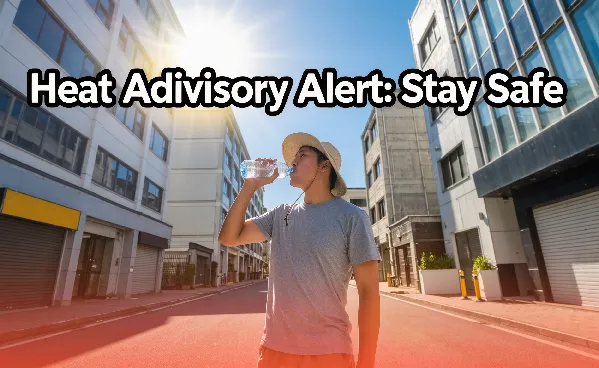Heat Advisory Alert: How to Stay Safe During Extreme Weather

Understanding Heat Advisories
Heatwaves can cause dehydration, heat exhaustion, and heat stroke, which can be life-threatening if not addressed promptly.
These alerts are particularly important for vulnerable populations such as the elderly, young children, outdoor workers, and people with chronic health conditions.
Recognizing Symptoms of Heat-Related Illnesses
Heat-related illnesses often develop gradually. Common signs of heat exhaustion include heavy sweating, weakness, dizziness, nausea, headache, and rapid pulse.
If left untreated, heat exhaustion can progress to heat stroke, which is a medical emergency characterized by confusion, hot and dry skin, high body temperature, and potential loss of consciousness.
Recognizing early symptoms and taking action quickly can save lives.
Essential Safety Tips During Extreme Heat
- Stay hydrated: Drink plenty of water throughout the day. Avoid alcohol and caffeine, which can increase dehydration.
- Limit outdoor activity: Avoid strenuous activities during peak heat hours (usually 10 a.m. to 4 p.m.).
- Seek cool environments: Use air-conditioned spaces or visit public cooling centers when temperatures soar.
- Wear lightweight clothing: Light-colored, loose-fitting clothes help regulate body temperature.
- Protect skin and eyes: Wear sunscreen, sunglasses, and hats to minimize sun exposure.
- Check on vulnerable people: Ensure elderly neighbors, children, and pets are safe and not exposed to extreme heat.
Heat Safety for Pets and Animals
Pets are also vulnerable during extreme heat. Provide constant access to fresh water and shade. Avoid walking dogs on hot pavement, as it can burn their paws. Never leave animals in parked cars, even for a short time, as temperatures inside a car can rise dramatically within minutes.
Heat Safety at Work
Outdoor workers or people in hot indoor environments should take extra precautions. Schedule breaks in shaded or air-conditioned areas, wear cooling vests if available, and maintain hydration. Employers should monitor conditions and provide appropriate support to ensure safety during extreme heat events.
Preparing Your Home for Heatwaves
Home preparation can significantly reduce heat risks. Use fans or air conditioning to keep indoor temperatures manageable. Close curtains or blinds to block direct sunlight, and consider using reflective window film. Keep emergency supplies such as water, electrolyte drinks, and first-aid kits accessible. Avoid using ovens or stoves during peak heat hours to prevent additional indoor heat buildup.
What to Do in a Heat Emergency
If someone shows signs of heat stroke, call emergency services immediately. Move the person to a cooler environment, remove excess clothing, and apply cool compresses. Offer small sips of water if the person is conscious. Rapid medical attention is critical to prevent severe complications or death.
Stay Informed
Monitor local weather forecasts and alerts regularly. Mobile apps, weather websites, and local news channels provide up-to-date information on heat advisories and extreme weather events. Being informed allows you to plan activities and take precautions to stay safe.
Leave a Reply